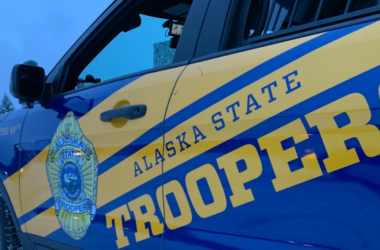Alaska experienced an unusually high number of disasters in 2022, with 14 state disaster declarations and six federal declarations. The State of Alaska has averaged approximately four disaster events per year going back to 1978. The Division of Homeland Security and Emergency Management has been very busy responding to disasters and managing disaster recovery programs.
Fourteen State Disasters and Six Federal Disaster declared in Alaska during 2022
- 2022 December/January Interior Windstorm declared Jan.3 (FEMA declared on March 24)
- 2022 January Mat-Su & Copper Valley Windstorm declared Jan.3 (FEMA declared on March 24)
- 2022 January Southeast Storm declared Jan. 11
- 2022 February Tununak Washeteria Fire declared Feb. 17
- 2022 February Hooper Bay Sewage Lagoon Failure declared Feb. 25
- 2022 March Eagle River Avalanche declared March 28
- 2022 May Spring Floods declared May 12, 2022 (FEMA Dec on August 26)
- 2022 February Galena Fire Hall Collapse declared May 13
- 2022 May Lowell Point Avalanche declared May 13 (FEMA declared on June 26)
- 2022 Summer Wildfires declared June 10
- 2022 Richardson Highway Flooding declared June 10
- 2022 August Mat-Su Flooding declared August 30, 2022
- 2022 June Skagway Landslide declared September 12, 2022
- 2022 September West Coast Storm Sept. 17 (FEMA declared on Sept 23)
The Governor declares each event a disaster emergency which activates specific disaster recovery programs to fund emergency protective measures and disaster recovery work.
“Alaskans pulled together during a year when multiple disasters had effects statewide,” said Governor Mike Dunleavy. “I would like to thank the public safety organizations, emergency responders, local and state agencies, Alaska National Guard members, non-profits, business, native corporations, and everyday Alaskans who helped with the response and recovery effort. Their hard work and dedication make a difference.”
Six of the state declared disasters also received a federal disaster declaration. FEMA, Small Business Administration, and other federal agencies activate their disaster recovery programs and can provide disaster recovery funds to individual and communities. When a disaster receives a federal declaration the State and FEMA will enter into a cost share agreement with the State funding 25%, and FEMA funding 75%.
“Disasters can impact one facility in one community, or can cause damages in multiple communities throughout a region,” said DHS&EM Director, Bryan Fisher. “It is our challenge to utilize our disaster recovery programs and our partners organizations to make sure Alaskans have their critical life, health, and safety needs met, and to help individuals and communities recover. Every disaster is unique and it requires a lot of problem solving. This year DHS&EM staff had no shortage of problems to solve.”
Alaska is one of the only states in the nation with state Public Assistance and Individual Assistance programs. Public Assistance repairs critical infrastructure and reimburses applicants for eligible emergency response costs, and Individual Assistance provides grants to Alaskans for housing, other emergency needs, and temporary housing.
“This last year has been a major challenge. DHS&EM staff, many who worked throughout the 2018 Cook Inlet Earthquake and the COVID 19 pandemic, have shown a high level of dedication and professionalism. As the director of this organization I could not be prouder of this team,” said Fisher.






